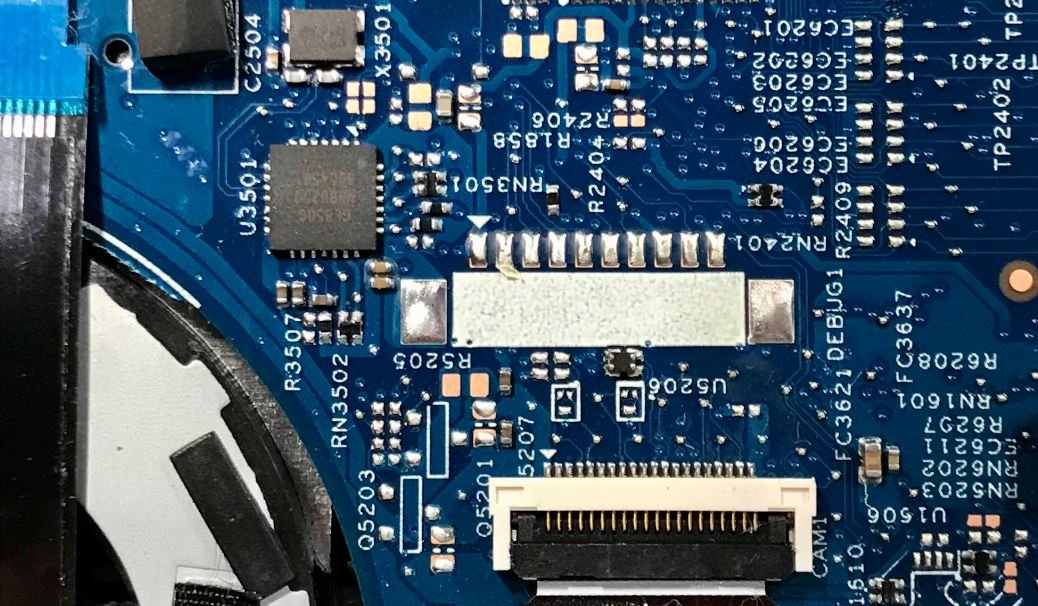AI Trust Issues
As artificial intelligence (AI) continues to advance and permeate various aspects of our lives, trust becomes an increasingly critical factor. AI technologies have the potential to revolutionize industries, enhance efficiency, and improve decision-making processes. However, concerns surrounding issues of trust and transparency pose significant challenges to widespread adoption and acceptance of AI systems. Exploring these trust issues is crucial to ensure that AI technologies are developed and deployed ethically and responsibly.
Key Takeaways
- Trust is a major concern when it comes to AI technologies.
- Transparency and explainability are key factors in building trust.
- AI bias and discrimination are significant challenges in trust-building.
**Transparency** is a fundamental principle in building trust between humans and AI systems. To trust AI, users require insights into how decisions are made and what data is used to inform those decisions. **Explainability** of AI algorithms and models is crucial to enable users to understand and evaluate the system’s recommendations or actions. Providing clear explanations helps users feel understood and allows them to identify potential biases or errors in the AI’s outputs.
*While AI technologies hold immense potential, a lack of transparency in their inner workings can be concerning.*
AI systems must also address **bias** to build trust. Biases can manifest in AI models due to biased training data or biased algorithm design. If AI systems exhibit discrimination, it erodes trust and can have real-world consequences, such as perpetuating social inequalities or making biased hiring decisions. Eliminating bias requires diverse training data, rigorous testing, and continuous monitoring to ensure fairness and accuracy in AI outcomes.
*Recognizing and mitigating bias is crucial to prevent AI from perpetuating societal inequalities.*
The Role of Regulation
Regulatory frameworks play a crucial role in fostering trust in AI systems. Governments and organizations are implementing guidelines and policies to ensure ethical AI development and deployment. By setting standards for transparency, fairness, and accountability, regulations seek to protect users and minimize potential risks associated with AI technologies. However, achieving the right balance between ensuring trust and fostering innovation remains a challenge for regulators.
Addressing Trust through Accountability
Accountability is vital in addressing trust issues with AI systems. Organizations must establish clear lines of responsibility and accountability for the development and deployment of AI technologies. This includes understanding and addressing potential ethical concerns, providing channels for user feedback and recourse, and conducting regular audits to evaluate the performance and impact of AI systems.
*Effective accountability mechanisms ensure that AI systems are deployed in a responsible and transparent manner.*
Tables with Interesting Info
| Year | AI Applications |
|---|---|
| 2015 | Facial recognition |
| 2016 | Virtual assistants |
| 2017 | Autonomous vehicles |
| 2018 | Machine learning in healthcare |
| AI Trust Survey Results | |
|---|---|
| Trust in AI | 48% |
| Distrust in AI | 27% |
| Neutral | 25% |
| Factors that Influence Trust in AI | Percentage |
|---|---|
| Transparency | 58% |
| Fairness | 42% |
| Accuracy | 39% |
| Privacy | 34% |
Conclusion
Building trust in AI systems is an ongoing challenge that requires transparency, explainability, and addressing bias. While regulatory frameworks and accountability mechanisms help facilitate trust, fostering innovation remains paramount. Striking the right balance between trust and innovation is vital to ensure the responsible and ethical development and deployment of AI technologies that benefit society as a whole.

Common Misconceptions
Misconception 1: AI is out to take over the world
One common misconception about AI is that it is out to take over the world. This idea is fueled by science fiction movies and sensationalist media. In reality, AI is simply a set of algorithms and models designed to assist humans in various tasks. It does not possess consciousness or intent to take control.
- AI is created by humans and follows predefined rules.
- AI lacks awareness and cannot act independently.
- AI is used to augment human capabilities, not replace them entirely.
Misconception 2: AI will replace all human jobs
Another misconception is that AI will replace all human jobs. While AI has the potential to automate certain tasks and job roles, it is unlikely to completely replace humans in the workforce. AI works best in conjunction with human intelligence and can help streamline processes, reduce repetitive tasks, and free up time for more complex and creative work.
- AI will enhance job roles rather than replace them.
- Certain jobs require human skills like empathy and critical thinking, which AI lacks.
- New job roles will emerge as AI technology advances.
Misconception 3: AI can accurately mimic human thinking
Some people mistakenly believe that AI can accurately mimic human thinking. While AI can perform tasks that were traditionally thought to require human intelligence, it operates based on patterns and data analysis rather than true human-like thinking. AI systems are built to make predictions and decisions based on statistical models, not emotions or subjective reasoning.
- AI does not possess consciousness or emotions.
- AI relies on data and algorithms to make decisions, not personal experiences.
- AI cannot replicate human creativity or intuition.
Misconception 4: AI is always biased and discriminates
It is a misconception to believe that all AI systems are inherently biased and discriminatory. While it is true that AI can inadvertently reflect and amplify biases present in the data it is trained on, it is not an inherent characteristic of AI. Bias in AI can be addressed through careful data selection, feature engineering, and ongoing monitoring to ensure fairness and equity.
- Bias in AI is a result of biased data or human biases in the training process.
- AI systems can be audited and improved to reduce bias and discrimination.
- Efforts are being made to promote ethical AI development and deployment.
Misconception 5: AI will make humans obsolete
The idea that AI will make humans obsolete is a common misconception. While AI may automate certain tasks and reduce the need for manual labor, it is important to recognize that humans possess unique qualities and skills that AI cannot replace. Human interactions, emotions, creativity, and adaptability are valuable attributes that AI cannot replicate.
- AI technology is designed to complement, not replace, human capabilities.
- Collaboration between humans and AI can lead to better outcomes and innovations.
- Humans have the ability to continuously learn and adapt, while AI is limited to programmed capabilities.

AI Trust Issues in Social Media
Social media platforms have become integral parts of our lives, connecting people around the globe. However, with the increasing use of artificial intelligence (AI) algorithms in these platforms, concerns about privacy, accuracy, and bias have emerged. This article explores ten key points that highlight the trust issues surrounding AI in social media.
1. User Privacy:
AI algorithms employed by social media platforms often collect and analyze vast amounts of user data, raising concerns about privacy. Users are increasingly anxious about how their personal information is used for targeted advertisements or potentially compromised.
2. Algorithmic Disinformation:
The spread of disinformation on social media is a growing concern. AI algorithms can inadvertently promote false information, making it challenging for users to distinguish between accurate and misleading content.
3. Algorithmic Bias:
AI algorithms may unintentionally reflect the biases inherent in the data used to train them. This bias can manifest in various forms, including racial, gender, or socioeconomic biases, thus perpetuating discrimination in social media platforms.
4. Filter Bubble:
AI algorithms often create filter bubbles, limiting users’ exposure to diverse viewpoints and reinforcing confirmation bias. This phenomenon can lead to echo chambers and a polarized online environment.
5. Transparency:
Lack of transparency in how AI algorithms function hinders users‘ understanding and trust. Users have limited visibility into the decision-making processes behind content selection and recommendation systems.
6. User Manipulation:
AI algorithms can manipulate user behavior, nudging them towards certain actions or content consumption. This raises concerns about the ethical implications of exerting influence over individuals without their knowledge or consent.
7. Deepfakes:
The emergence of deepfake technology poses significant challenges for social media platforms. AI-generated manipulated images or videos can deceive users, eroding trust in the authenticity of content.
8. Data Breaches:
AI algorithms require large amounts of user data, making social media platforms attractive targets for cybercriminals. Data breaches can result in compromised personal information, eroding trust in the security practices of these platforms.
9. Lack of Human Oversight:
Overreliance on AI algorithms without sufficient human oversight can lead to unintended consequences. The absence of human judgment and intervention can result in algorithmic decisions that lack context or empathy, damaging user trust.
10. Ethical Responsibilities:
Social media platforms carry ethical responsibilities in the deployment of AI algorithms. Ensuring fairness, accountability, and transparency is crucial for building and maintaining trust among users.
As AI technologies continue to evolve, addressing these trust issues becomes imperative to safeguard the well-being of individuals and create a more trustworthy social media environment. Vigilant attention to these challenges and the development of robust solutions will be vital for the future of AI in social media.
Frequently Asked Questions
Why is trust an important consideration in AI?
Trust is an important consideration in AI because it affects how individuals interact with AI systems. If users do not trust AI, they may be hesitant to rely on its recommendations or make decisions based on its output. This can hinder the adoption and effectiveness of AI technologies.
What are some common trust issues with AI?
Some common trust issues with AI include biases in algorithms, lack of transparency in decision-making processes, data privacy concerns, and the potential for malicious use of AI technologies.
How can biases in AI algorithms impact trust?
Biases in AI algorithms can impact trust by perpetuating unfair or discriminatory outcomes. If an AI system demonstrates biased behavior, it may lead users to question its reliability, fairness, and ethical principles.
What role does transparency play in building trust?
Transparency plays a crucial role in building trust with AI systems. When users understand how AI systems work and why certain decisions or recommendations are made, they are more likely to trust the technology. Transparency helps users assess the fairness, accuracy, and reliability of AI systems.
How can organizations address trust issues related to AI?
Organizations can address trust issues related to AI by implementing responsible AI practices. This includes ensuring transparency in algorithms, addressing biases in data and system design, prioritizing ethical considerations, and actively engaging with users to understand their concerns and needs.
What measures can be taken to protect data privacy in AI?
To protect data privacy in AI, organizations can implement privacy-by-design principles, anonymize data used in AI algorithms, and ensure secure storage and transfer of data. User consent and clear data usage policies are also essential in establishing trust around data privacy.
How can trust be established in AI systems used for critical decision-making?
Trust in AI systems used for critical decision-making can be established by providing explanations for the system’s decisions, allowing for human oversight and intervention, conducting robust testing and validation, and involving experts and stakeholders in the design and evaluation of the system.
What are the potential risks of malicious use of AI?
The potential risks of malicious use of AI include the creation of deepfake content for misinformation or fraud, AI-powered cyber attacks, and the development of autonomous weapons systems that may pose significant ethical and security concerns.
How can the public be educated about AI trust issues?
Educating the public about AI trust issues can be achieved through public awareness campaigns, educational programs, and incorporating AI literacy into school curricula. Open dialogues and discussions between AI developers, policymakers, and the public can also play a crucial role in raising awareness and understanding.
What is the role of ethical guidelines in addressing AI trust issues?
Ethical guidelines provide a framework for addressing AI trust issues by outlining principles and standards that promote responsible AI development and deployment. Following ethical guidelines helps mitigate risks, build trust, and ensure AI technologies are developed and used in a manner that aligns with societal values.




